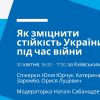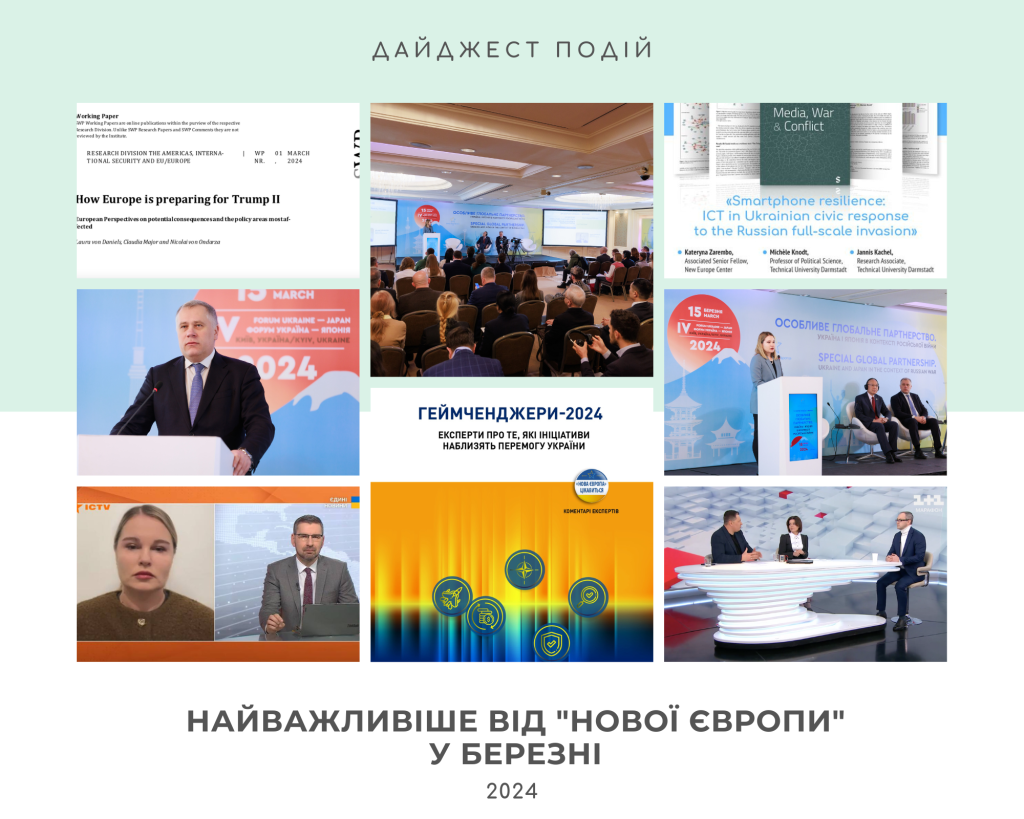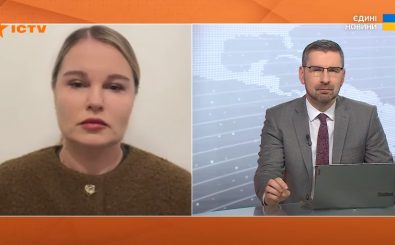Report by Kateryna Zarembo, Deputy Director of the NEC, on assessment of Ukraine’s progress in relations with NATO for the quarterly magazine ТRUMAN Index. The full version of TRUMAN Index No. 4 (8) is available on the TRUMAN Agency website
March – September 2018
Positive points: + 26
Negative points: -7
Total: + 19
TRUMAN Index: +0.86
Update
This period was filed with events involving Ukraine and NATO, from the passing of the long-awaited Law on National Security and intrigues around Ukraine’s participation in the Brussels summit, and an unexpected and surprisingly hostile conflict with Hungary, which has been doing everything it can to block Ukraine’s cooperation with the Alliance both at the highest level and at the operational level. Experienced observers say it’s “déjà vu all over again” for them: in the run-up to the summit Ukraine comes through on some commitments, but then everything dies down again once the summit ends. The current doldrums are doubly burdened by Ukraine’s approaching election seasons, with politicians at all levels focused not on urgent work but on strengthening their own chances of remaining in power. At this point, Ukraine’s path to integration with NATO, as well as to the EU, demands clear milestones that would make it possible to measure just how close the country is to reaching the benchmarks necessary for membership. Because member countries refuse to discuss the situation on this level, saying “Let’s see some reforms and then talk,” Ukraine faces a bit of a vicious cycle: Euroatlantic integration is such a strategic and unattainable goal that its achievement becomes a bogged-down process rather than work towards a concrete outcome.
TIMELINE
The Brussels Summit: Half-measures and compromises
Ukraine’s preparations for this year’s NATO summit in Brussels were accompanied by a series of minor scandals. Even at the beginning of the year, it wasn’t exactly clear whether Ukraine would be invited to participate. In private discussions with NATO officials, there was a “wishlist” of three items for the Ukraine-NATO Commission to take place at the highest level in Brussels: (1) the passage of a bill on national security that included key provisions that NATO insisted on; (2) the approval of the Concept for Reforming the SBU, Ukraine’s security bureau; (3) a resolution to the dispute with Hungary over the education law. Ukraine, in turn, had its own wishlist for the Alliance, counting, among others, on support for its bid for the Enhanced Opportunities Partnership.
Today it’s clear that neither Ukraine nor NATO came through. Of the three NATO conditions, Ukraine only fulfilled one: on June 21, three weeks before the summit, the Verkhovna Rada passed a security bill that included the key position on instituting parliamentary oversight of the security and defense sectors that was insisted on by western partners. The concept for reforming the SBU was never passed. Instead, the National Security law requires the SBU to develop the necessary bill and submit it to the president by the end of this year. With regards to Hungary, the confrontation not only remained unresolved, but actually grew worse.
And so the way Ukraine was involved in the summit resembled a riddle from a fairytale: “You can’t walk and you can’t ride.” Ukraine was eventually invited, not to the session of the Ukraine-NATO Commission, but to a meeting in the format of the Resolute Support Mission, which involves engaging all partners which contribute to NATO’s eponymous operation in Afghanistan. Since Hungary continued to block the work of the UNC, the Alliance decided to find a creative solution to the situation and, at the initiative of the American side, set up a joint session of the North Atlantic Council with Ukraine and Georgia.
To the list of disenchantments for the Ukrainian side was added the absence of a joint statement at the conclusion of the NAC meeting with Ukraine and Georgia, in contrast to the joint public Georgia-NATO statement. The lack of a joint statement was also Hungary’s doing: two weeks before the summit, PM Viktor Orban sent a letter addressed to NATO SecGen Jens Stoltenberg warning that he would block any concluding statement after the trilateral meeting. According to insiders, Hungary engaged in serious diplomatic work, not only with the SecGen, but with NATO members, demanding that they not even draft a joint statement. Indeed, in the run-up to the summit Stoltenberg was inundated with letters related to Ukraine: sources say that an appeal to unblock the UNC was signed by 12 NATO members, demonstrating just how many partners the country has in NATO today.
Ukraine also failed to get Enhanced Opportunities Partnership, a format that institutionalizes a kind of “special partnerships” for those NATO allies who are the members of the Partnership Interoperability Initiative or PII. Ukraine has participated since 2014. Partners with this status are eligible for regular political consultations on security issues, including at the ministerial level; expanded access to the interoperability program and training; and exchanges of practice and information, together with closer interaction during crises and during preparations for operations. Today, Australia, Finland, Georgia, Jordan, and Sweden all enjoy this status. Both Ukraine and NATO understood that for Ukraine this partnership would be more of a symbolic victory on the path to Euroatlantic integration and a political trump for Ukraine’s political leadership, rather than any real rapprochement with the Alliance or enhanced opportunities.
Kyiv thought it would not take much effort to grant Ukraine this status, given that even neutral countries like Finland and Sweden have it, as does Georgia, which received assurances at the NATO summit in Bucharest together with Ukraine that the two would one day be able to join the Alliance. However, the Alliance saw the issue in a fundamentally different light. Indeed, sources close to the negotiation process say that not so long ago, in 2014, NATO was closer to granting Ukraine EOP status and it was at that time that Georgia received it. However, four years ago, Ukraine’s leadership thought this was not an ambitious enough goal, compared to getting the Membership Action Plan or MAP, which is still on the table. Today, the situation is quite different: Hungary’s interference has been joined by a series of other countries, including France, Germany and the Netherlands, who were against giving Ukraine this status, primarily because of fears of provoking Russia—something that is only admitted to in unofficial conversations.
However, Ukraine has played no small role in this outcome, too. The Alliance is not comfortable with Ukraine’s emphatic and exaggerated response to the least bit of progress in relations with NATO. For instance, some influential member countries were very critical of the wave of headlines caused by just a correction of information on the NATO site. Until February 9, 2018, NATO’s official site noted that aspirants were Bosnia & Herzegovina, Georgia and the Republic of Macedonia, while Ukraine, according to NATO, “has since 2010 not officially pursued membership.” That, of course, was when the Yanukovych Administration formally declared the country to be “non-bloc.” Since June 8, 2017, of course, this is no longer true, but Ukraine joined the list of aspirants only after President Poroshenko apparently sent a letter to SecGen Stoltenberg thoroughly explaining Ukraine’s Euroatlantic aspirations after they met at the Munich Security Conference in February 2018. News that the site had been changed was received with such excitement in Ukraine that the Alliance got nervous: if Ukraine were granted EOP status, it could interpret this with a big dollop of wishful thinking about membership. Even before the summit, NATO officials emphasized that such status was in no measure a step towards membership. And so they decided not to give Ukraine reason to speculate. NATO officials are careful to avoid talk of membership and never tire of repeating that Ukraine has to focus on reforms and not on symbolic statuses and formulations.
The summit did have positive aspects for Ukraine, including the joint declaration with its unambiguous statements recognizing Ukraine’s Euroatlantic ambitions, Russia’s actions in Crimea and Donbas, and the threat that Russia represents for NATO itself. In off-record conversations, Ukrainian officials admitted that a few weeks before the summit, no one in Ukraine could have expected this kind of statement. What influenced their sharp wording was the determination of Canada and the US. Another bit of good news from the summit was about the role of the US, which the Americans so far want to and are prepared to play in order to support relations between Ukraine and the Alliance.
Euroatlantic Lawmaking
The Verkhovna Rada turned out to be working the most actively towards Euroatlantic integration during this past quarter. For starters, at a pinch before the NATO summit it managed to pass a key bill on national security. What’s more, on September 20, the Rada gave 321 votes, a constitutional majority, to submit a bill amending the Constitution to the Constitutional Court. The amendments would add provisions that spell out Ukraine’s strategic aspirations to membership in the European Union and NATO. The idea was first mentioned by President Poroshenko just in February. The point is to make Ukraine’s Euroatlantic choice “irreversible,” especially if the VR election should result in the coming to power of political forces of a different persuasion. Incidentally, the law on national security includes provisions about gaining membership in the two organizations as a strategic goal for Ukraine. It’s obvious that NATO treats such declarative steps as “the sovereign choice of Ukraine” without any particular enthusiasm.
Even the current administration can be challenged about the implementation existing legislation. Although the law on national security was a long-awaited step towards reforming Ukraine’s security and defense sectors, some of the provisions in it that were insisted upon by experts and western partners ended up not being reflected in it, while others are formulated in a way that makes it possible to replace substance with form.
First of all, the very procedure for passing the law was not without its problems. To persuade MPs to vote for this bill, the Ukrainian authorities had to turn to western partners in the International Consultative Group, meaning the EC Delegation, NATO, the US Embassy, and the Advisory Mission of the EU for reforming the civil security sector, with a request that they sign a letter spelling out the compliance of the bill to NATO standards. Sources who were familiar with the situation reported that when Ivan Vinnyk, the secretary of the VR committee for national security and defense, appeared on one of the major TV channels one night with the letter in hand, it caused consternation among the country’s partners: they had no idea that their support would be given so much publicity.
One way or another, the International Advisory Group’s vetting of the bill did not get in the way of some 500 propositions to amend it during debate in the Rada. In the end, the bill was passed in the version that western partners generally found acceptable. Other than parliamentary oversight over the security services, the law also provides for the defense minister and deputies to be civilians as of 2019, for an adjustment in the powers of the SBU, and for defense sector civil planning and military operational functions to be separated. This means splitting up the posts of Chief of General Staff and the Commander-in-Chief of the Armed Forces of Ukraine, currently united in the person of Gen. Viktor Muzhenko, starting in 2021.
As anticipated, the bill that was passed did not include a rule that former service personnel cannot be appointed Defense Minister sooner than five years after they leave the service. This means that we can expect the current DM, Stepan Poltorak, to simply trade in his soldier’s uniform for civvies on January 1, 2019. This can be seen in the fact that he has already begun to appear in public in civilian apparel. The previous Truman Index mentioned that NATO is unlikely to pressure Ukraine over this detail. Some say that Ukraine’s negotiators disarmed the Alliance’s representatives by simply pointing to Turkey and the United States. In the US, the principle of democratic control over the defense sector by appointing civilian Secretaries of Defense is not entirely being upheld: Gen. James Mattis was appointed a mere three years after he retired from active service, not seven years, as American law requires. As to Turkey, in July 2018, its new DM, Hulusi Akar, was still in active service when he was appointed. Interestingly, it appears that Minister Poltorak has really gotten used to thinking about his own civilian status. Such changes will be less easy to adjust to for some of his deputies, however—yet another example of resistance to change within Ukraine’s bureaucracies. Some western partners also expect the rule about separating the posts of the Chief of Staff and Commander-in-Chief of Ukraine’s Armed Forces to be hard to implement.
As to the SBU, the norms in the current law can be seem as a “half-victory.” Indeed, functions that clearly don’t belong to the Security Bureau, such as investigating corruption and white-collar crimes have been withdrawn while “counterintelligence to project the economic security of the country” has been left in. NATO considered this formulation acceptable, although some Ukrainian experts worry that this could let the SBU continue its attacks on business.
The revised law on the Security Bureau of Ukraine is supposed to be submitted to the president and then to the Rada by the end of this year. Unfortunately, this deadline does not establish a timeframe for its actual adoption, so the reform itself could well languish until after the election, especially with an incumbent president who is not interested in changing the powers of an agency that is strategic in terms of internal security and influence.
What’s more, when the NATO summit took place, the Alliance was clearly not prepared to offer Ukraine the MAP, the Ukraine-NATO Commission remains hamstrung by Hungary, and Ukraine is entering the election season. It’s not easy to say just what incentives the country might have to institute further reforms. Without any doubt, as tirelessly NATO’s representatives repeat to their Ukrainian counterparts, the country must reform for its own sake, not for the West. Yet, practice shows that pressure and stimulus from western partners have been effective drivers of reform in Ukraine, and so, when they are absent, and even more so when there is an election campaign underway, major breakthroughs are unlikely to take place. On the contrary: official Kyiv would like to see support, not pressure, and demonstrative solidarity on the part of its western partners, in order not to give overt and covert pro-Russian political forces an excuses to criticize the EU and NATO. And so, what’s left is to hope that the package of bills on security and other special services that MPs have already announced—on Rada control over special forces, on intelligence work, on transparency in the military-industrial complex, and on state secrets—will actually be voted on during the current session.
For now, the working priority for Ukraine-NATO relations in 2019 is instituting the updated format of Annual National Program, which focuses more on qualitative rather than quantitative indicators; the defense review; reform of logistics and state procurements; and so on.
Comprehensive Assistance: Hard in the execution
Ukraine continues to insist on interoperability between its Armed Forces and those of the Alliance by 2020, as stated in the Strategic Defense Bulletin. However, evaluations of progress in meeting NATO standards by Ukrainian officials and experts differ widely. The only accurate data that can be used is from the practical cooperation between Ukraine and NATO. In 2018, Ukraine sent 338 service personnel to participate in eight peacekeeping missions or other operations under NATO leadership. By the end of 2018, plans are to increase this number to 448 individuals in 9 missions, including expanding Ukraine’s contingent in Afghanistan. Ukraine also plans to participate in 38 international exercises by the end of the year, two of them under the aegis of NATO.
As to the trust funds that are supposed to assist Ukraine in a slew of areas, from medical rehabilitation to the disposal of radioactive waste, so far projects have shown mixed results. Most of the funds launched at the NATO summit in Wales have been successful and have attracted more than 70% of their slated funding. Some, like the medical rehabilitation trust already have 90%. However, the logistics and standardization trust were only able to attract 33% by October. The country managing the fund, Czech Republic, has proposed shutting this fund down next year as ineffective – however, currently the negotiations still review the possibility of its prolongation until June 2019. If the fund closed, it would be a negative signal both in terms of how ready Ukraine’s partners are to come through on their pledges, and in terms of Ukraine’s fundraising abilities—especially as the country appeals for a fund to demine territories under Kyiv’s control in the Donbas.
Another area of cooperation that has been of some concern to Ukraine is the work of the Ukraine-NATO Platform on Countering Hybrid Warfare. In the year since it was established, only two events have taken place under its auspices: an inaugural visit in Poland and a seminar on strategic communication in Vilnius. The Office of the Deputy Premier for European and Euroatlantic Integration is organizing the first large-scale event under this Platform, a conference on hybrid threats, to take place in Ukraine in November. So far, one conclusion that can be drawn is that far from all NATO member countries are interested in this Platform. As of September, only Latvia, Lithuania, Great Britain and Finland—where the European Center of Excellence for Countering Hybrid Threats opened in October 2017—had confirmed their participation. With the exception of the UK, it appears to be a problem getting western European countries involved.
Hostility from Hungary
Somewhat unexpectedly, relations with Hungary have become a separate headache for Ukraine in relation to NATO. The Ukraine-NATO Commission at the highest level has been blocked for nearly a year at this point. Whereas earlier Budapest was only trying to block work at the highest political level, today it is trying to block operational cooperation as well, both working events and funding for specific programs.
A few weeks prior to the Brussels summit, it looked like the two countries had reached a compromise during a meeting of their Foreign and Education Ministers outside Uzhhorod. Hungary even announced that it was going to unblock the UNC. However, just a few days later, the Hungarian side backtracked on its rhetoric, characterizing the negotiations as “unsuccessful”.
During the meeting in Zakarpattia, Ukraine and Hungary agreed to make two adjustments to Ukrainian legislation that matched recommendations from the Venice Commission. The first one was extending the transition period for full implementation of the Law “On Education” to 2023. The second was private schools teaching EU languages would be exempt from the norms in Art. 7 of the education law. Where the point extending the transitional provisions was already added to the 2019 Annual National Program, as required by Ukrainian schools, the second point had a mixed reception even among Ukrainian government officials. Ukraine’s concern is that offering a free hand to private schools will allow Russia to take advantage of this loophole to open its own schools and promote the Russian language and culture in Ukraine.
In any case, the conflict with Hungary has already moved beyond a mere discussion over the education law. During a visit to Romania, Viktor Orban made a provocative statement to the effect that Ukraine will never join the EU or NATO and that Budapest was going to establish a post in the Hungarian Government for an Ombudsman for the development of Zakarpattia. There was also a recent scandal with the Hungarian consul issuing Hungarian passports in Berehovo—although this was not the first time this had taken place in Zakarpattia. Obviously, Budapest is settling into a long-term conflict. With Orban’s unpredictability and the approach of elections to the European Parliament, it’s hard to see how this will end—and that affects the unblocking of the Ukraine-NATO Commission’s work. Incidentally, not just Ukraine is feeling that someone is working against it in Zakarpattia. NATO is also getting it: Zakarpattia is the only oblast where a NATO Documentation and Information Center exhibit that has travelled to southern and eastern oblasts opened and local officials not only failed to show up but deliberately organized a different event to coincide with the opening.
Communicating Ukraine’s Euroatlantic choice
Importantly, all the emotions and scandals in Ukraine-NATO relations aside, the issue of communicating the Euroatlantic choice to Ukrainian voters remains on the B-list of priorities. The 2018 Action Plan to implement the Concept for informing the public about Euroatlantic cooperation was confirmed in February, but the National Broadcasting Company only announced a tender for a public campaign about NATO in Ukraine in September.
The need for such communication is evident both in the results of opinion polls and in qualitative studies. In a recent survey by the Democratic Initiatives Fund (DIF) only 14% of respondents noted that there was plenty of information about NATO available in the media—and in the east, this plunged to 1%. So it’s hardly surprising that support for NATO remains lower than it might be among the public in Ukraine. Altogether, 42% of Ukrainians support the idea of membership in the Alliance. In the south and east, this drops to about 20%. Meanwhile, support for non-bloc status has been steadily growing. Whereas in November 2015 only 23% of Ukrainians favored neutrality, by August 2018, this was up to 35%. Unfortunately, Ukrainian voters don’t tend to take government communication at face value, which means there is a need for public and cultural events to present the essence of Euroatlantic integration for Ukraine.
Events in Ukraine-NATO relations (March– September 2018). Point-based evaluation
| Date | Event | Points |
| March 9 | Deputy PM for European and Euroatlantic Integration Ivanna Klympush-Tsyntsadze meets with Deputy NATO SecGen Rose Gottemoeller at NATO HQ in Brussels. | +1.0 |
| March 20 | FM Pavlo Klimkin meets with NATO SecGen Jens Stoltenberg. | +2.0 |
| March 28 | President Poroshenko signs the Decree “On approving the Annual National Program under the auspices of the Ukraine-NATO Commission for 2018.”
The Commission meets at the ambassadorial level. |
+1.0
+1.0 |
| March 29 | Deputy PM for European and Euroatlantic Integration Klympush-Tsyntsadze meets with Deputy NATO SecGen Gottemoeller in Brussels. | +1.0 |
| April 12-13 | Deputy NATO SecGen Rose Gottemoeller visits Kyiv. | +2.0 |
| May 14 | The Partnerships and Cooperative Security Committee meets with Ukraine at NATO HQ for the Planning and Review Process. | +1.0 |
| May 28 | The Ukraine-NATO Commission meets at the ambassadorial level. | +1.0 |
| May 29 | The Partnerships and Cooperative Security Committee meets in the form of the Ukraine-NATO Commission at NATO HQ to discuss how to carry out anti-corruption reforms in Ukraine. | +1.0 |
| June 8 | DM Stepan Poltorak meets with NATO SecGen Stoltenberg. | +2.0 |
| June 21 | The Verkhovna Rada passes the Law “On the national security of Ukraine.” | +2.0 |
| June 26 | President Poroshenko and NATO’s Stoltenberg talk over the phone. | +1.0 |
| July 5 | Poroshenko signs the Law “On the national security of Ukraine.” | +1.0 |
| July 11-12 | Ukraine participates in the NATO summit in Brussels, including in a session in the format of the North Atlantic Alliance, Ukraine and Georgia, as well as in a “Resolute Support” high-level meeting.
The final declaration of the NATO summit confirms Ukraine’s membership as the ultimate objective of integration and Russia’s threat to both Ukraine and NATO. Ukraine fails to receive Enhanced Opportunities Partner status. Hungary once again blocks the Ukraine-NATO Commission from sitting and approving the text of the final Ukraine-NATO declaration. |
+2.0
+1.0
-2.0 -5.0 |
| July 16 | A regular meeting of the Steering Committee of the Program for Professional Development of Civil Servants in Ukraine’s Defense and Security Sectors takes place. | +1.0 |
| September 5 | A working session takes place at NATO HQ between Ivan Cherniakhovskiy National Defense University’s Deputy Director of Academics Maj-Gen Serhiy Salkutsan and NATO DEEP Coordinator Mariusz Solis. | +1.0 |
| September 6 | During the Rapid Trident 2018 multinational exercises, Ukraine’s Land Forces Commander Col. Gen. Serhiy Popko and NATO’s Land Forces Commander Lt. Gen. John S. Tomson III signed a Letter of Cooperation between their two commands. | +1.0 |
| September 13-14 | NATO Deputy SecGen for Political Affairs and Security Policy Alejandro Alvargonzalez visits Ukraine. | +1.0 |
| September 20 | The Verkhovna Rada approves a submission to the Constitutional Court a bill amending the Constitution regarding Ukraine’s strategic course to gain membership in the European Union and NATO. | +2.0 |







